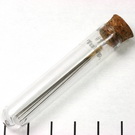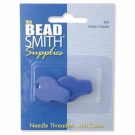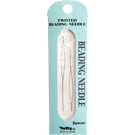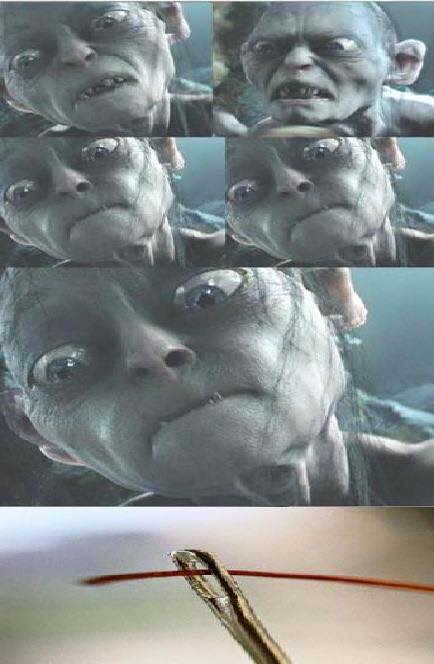Sometimes I have the tendency to take an extra long thread so that it can last me a while, because it is often a bit difficult to get the thread into the needle. It can be especially difficult in the evening with less light and sleepy eyes. 😉 Keep reading on for tips on how to get your thread through the needle in one go.
With these trics you might DO get it at your first try:
- Cut the thread diagonally and wet it a bit. The angle makes the tip of your thread slightly thinner and by making it wet you have less chance of fraying. This only helps with yarn-like beading thread, not with fireline.
- Is the fireline just a little too thick? Try to flatten the end of the fireline, for example with pliers, your nails or your teeth. When the tip of your fireline is flat, it’s a little easier to get it through the threading needle.
- Grab your thread between your fingertips near the end as high as possible. Threading a needle is easier if you hold the tip of the thread between your fingertips, with only a small point sticking out. Push the needle onto this and press further between your fingers. If you now separate your fingers, the needle will be around the thread. It could also help to wet the thread a little bit at first.

- Use a larger needle size. Beading needles start with size #10 and the higher the number the thinner the needle (I don’t know why 😉 ). The thinner the needle, the more likely it is to break and the more difficult it is to get the thread through the needle. Size #10 and #11 are used most often and it is easier to get the thread in there than with, for example, size #13. I only use the thinner needles if I have to go through beads that have already had several threads through them.


Are you still struggling? There are 2 options left:
- Use a threader: The smooth metal makes it easier to get the thread through the needle.

- There are also other types of needles: twisted beading needle and collapsible eye needle. These are very flexible and the eye is therefore very spacious. The disadvantage could be that the needle itself is also very flexible, which is not suitable for all beading projects. But most of all, it just depends on your own preference. I personally haven’t tried those yet and only use the hard needles.

And like anything, practice makes perfect, it gets easier in the end. 😉 Do you have any tips & tricks to avoid needle & thread frustration?

